Ever walked into a room and been startled by the sharp pop of a light bulb bursting? It’s not just surprising; it’s downright baffling. You might wonder why these trusty sources of light suddenly turn into mini fireworks.
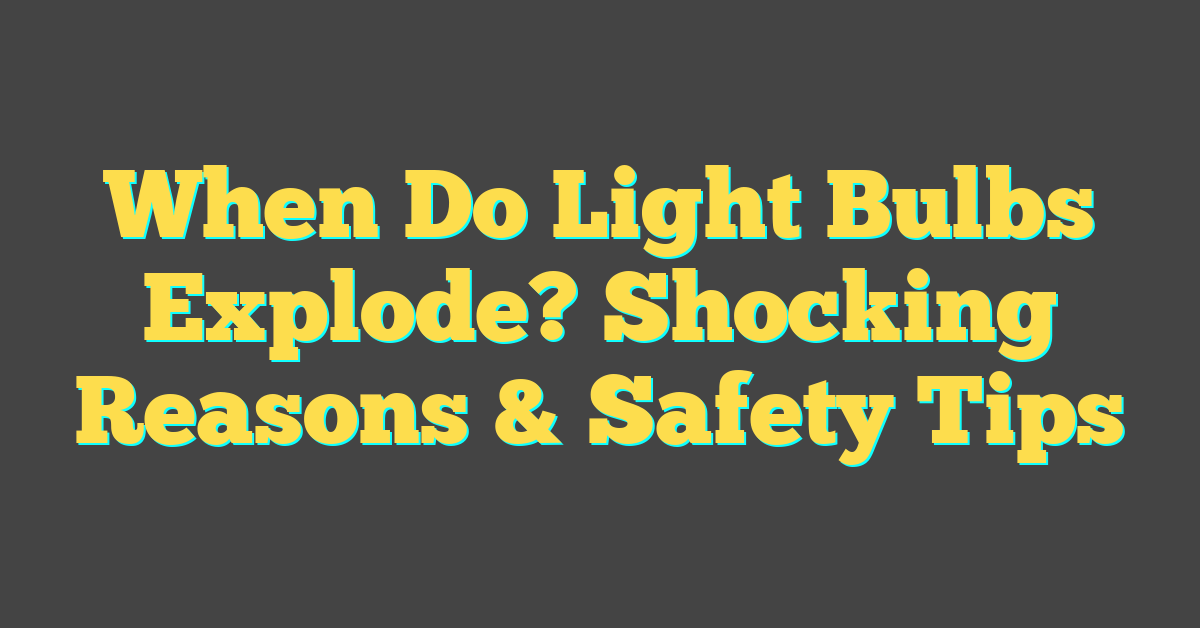
Why Do Light Bulbs Explode?
Ever wondered what makes your seemingly stable light bulbs turn into unexpected sparklers? Turns out, several factors contribute to this startling issue.
Let’s shed some light on the usual suspects. Firstly, it’s the voltage fluctuations that are a common nemesis for light bulbs. Excessive voltage causes an increase in current, which may lead to the light bulb overheating and ultimately bursting. If you live in an area with unstable electrical supplies, bulbs might just not be able to take the heat.
Another factor is the build quality of the bulb. Inexpensive or counterfeit bulbs often don’t meet the safety and quality standards. These bulbs may have thin glass or faulty filaments that can easily break under stress, resulting in an abrupt light show.
- Moisture can be a bulb’s undoing as well. When water comes into contact with the hot glass, it leads to thermal stress and sometimes an explosive shatter. Especially consider your outdoor or bathroom lights, as these poor guys are on the frontline.
Faulty wiring or loose connections in your fixtures can also contribute to light bulb explosions. If the electrical connection keeps flickering on and off, it creates a spike in the power flow, and the stress can shatter the bulb’s delicate components.
Remember that light bulbs, like all things, have a lifespan. Over time, the filament within the bulb weakens and is more likely to snap and cause a burst. So keep track of their time served and replace them routinely.
Being careful with your choice of bulb can go a long way, too. LED bulbs, for instance, are less likely to explode due to their durability and the fact that they don’t operate at high temperatures like traditional incandescent bulbs do.
It’s fascinating how such a common household item has its own set of complexities, isn’t it? Armed with this knowledge, you’ll be better equipped to prevent your light bulbs from turning into unexpected fireworks. Keep an eye on your light fixtures, and they’ll serve you well, without the dramatic exit.
Common Causes of Light Bulb Explosions
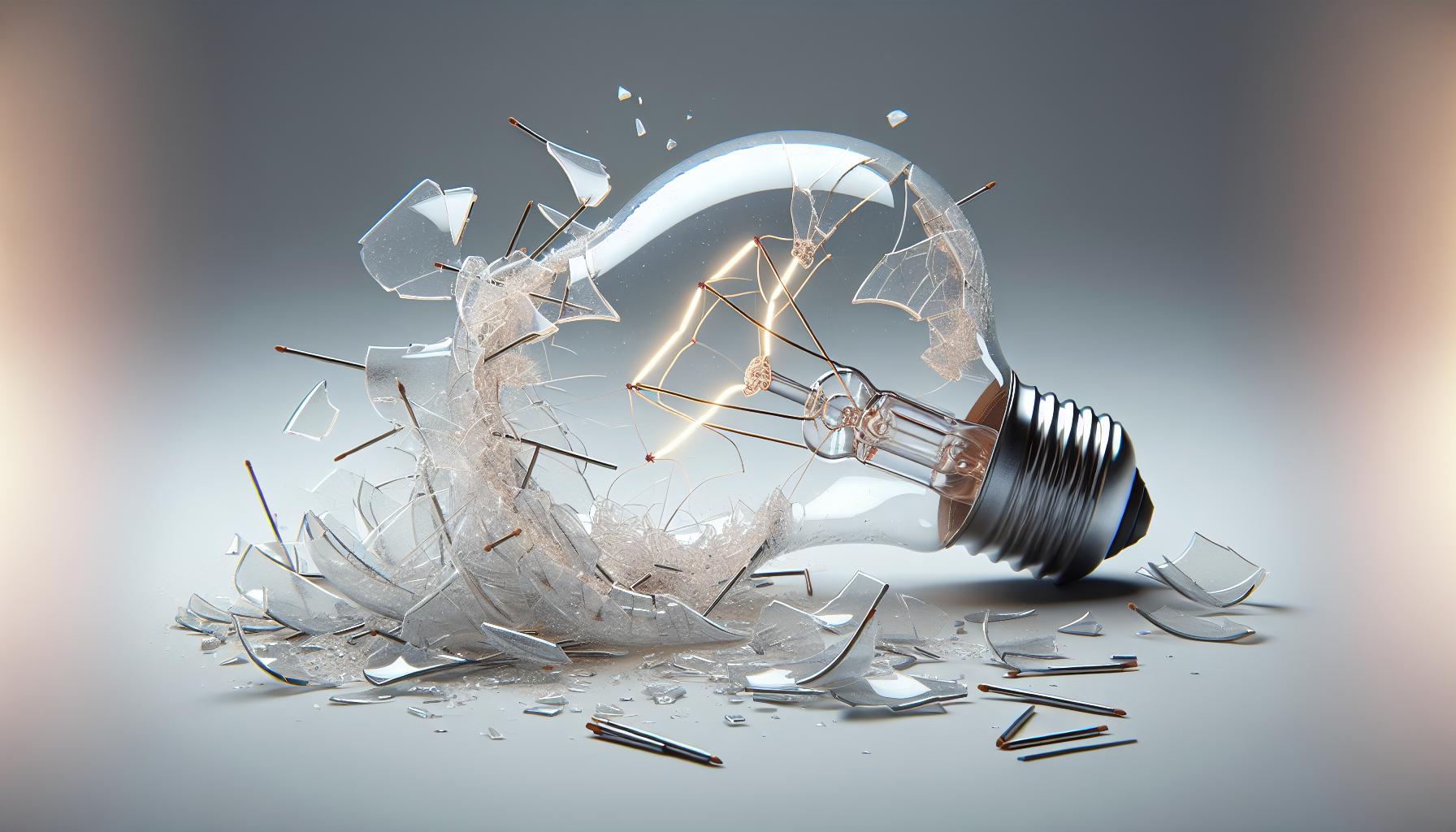
You might not think about it until you’re sweeping up glass, but understanding why light bulbs explode is part of being a savvy homeowner. It’s like being a detective, but for your light fixtures.
First off, Voltage Fluctuations are a major perpetrator. Just like your morning coffee gives you a jolt, a surge of electricity can give a bulb more than it can handle, leading to an overheat and…pop. It’s crucial to have a stable voltage to prevent this jarring wake-up.
Poor build quality is also to blame. You know the saying “You get what you pay for”? Well, that rings true with bulbs. Inferior Materials can’t always stand the heat of the current flowing through them, and the resulting tension causes them to shatter. Cheaper isn’t always better, especially when it comes to safety.
Water is another nemesis of light bulbs, although it might sound like a scene from a horror movie! Moisture can sneak in from various sources—like humidifiers, leaks, or even taking a hot shower—and when it meets the high temperatures of a bulb, the sudden cooling that happens can lead to a burst.
Ever watch a movie and know something’s wrong because of the flickering lights? That’s not just a spooky effect; it signifies Faulty Wiring. And in your house, it’s a sign that the electrical connections might be loose or worn, causing erratic currents that stress out your bulbs.
Lastly, remember light bulbs aren’t immortal. Like all good things, they have a Natural Lifespan. Once a bulb has lived its life, resisting the electrical flow, it can go out with a literal bang. Make a note to replace them before they reach that grand finale.
« How Do I Know Light Bulb Size? Find Your Perfect Fit with These Tips
Why Do We Use Light Bulbs? Unveiling Their Impact on Daily Life »
Remember, upgrading to LED Bulbs can light the way to a safer home. They’re tough, run cooler, and aren’t as fazed by the usual suspects behind bulb explosions. Plus, they save you money on energy bills—so they’re kind to both your wallet and your peace of mind.
Overheating and Thermal Stress
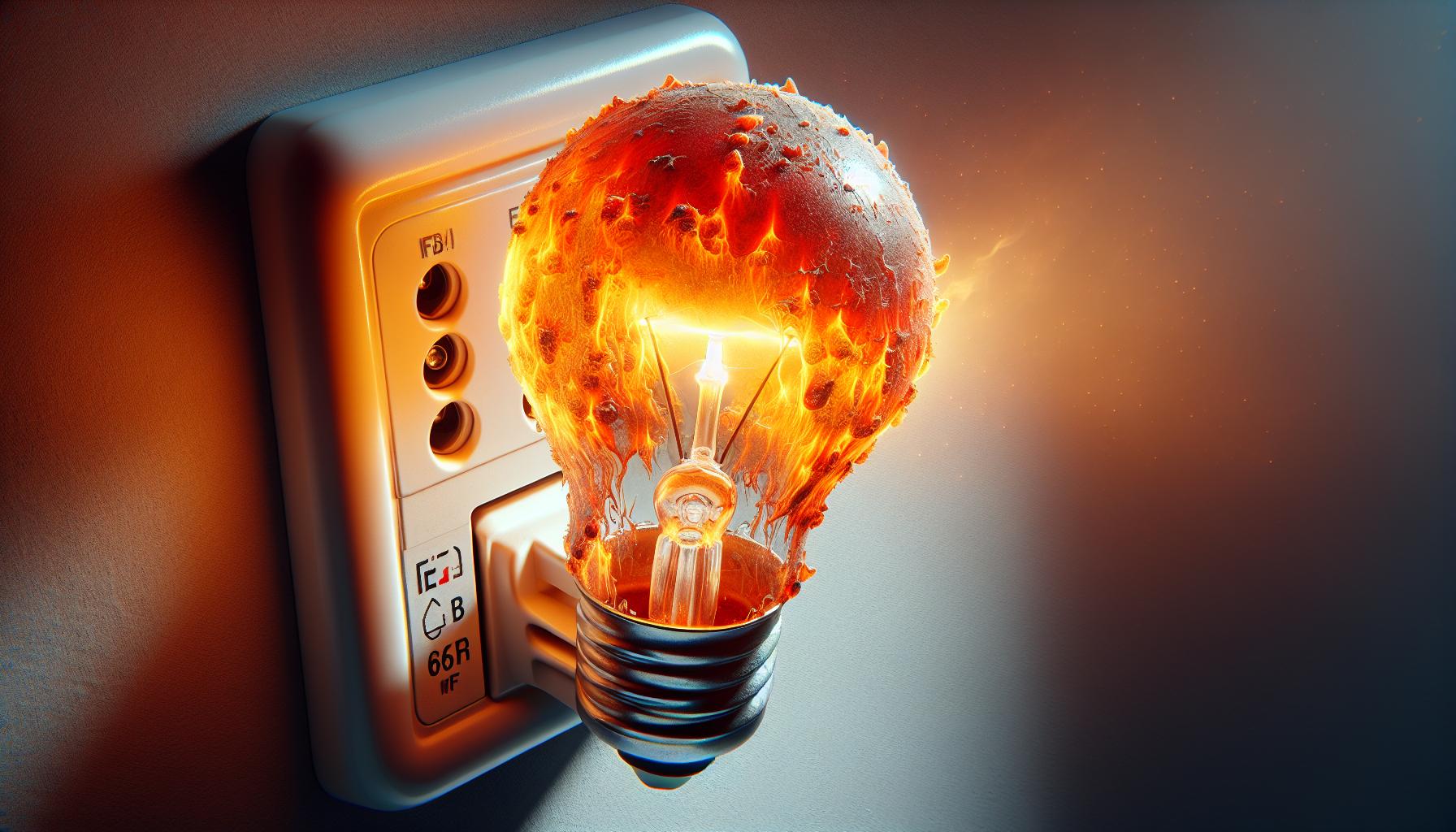
You might think that overheating is an issue relegated to electronics with more complex circuitry, but light bulbs are just as susceptible to this problem. When a bulb operates at a higher temperature than it’s designed for, it’s at risk of failing—and sometimes spectacularly. But what exactly causes a bulb to overheat?
Inadequate Airflow is often the villain behind overheating. For example, when you place a light bulb in a poorly ventilated fixture, the heat generated by the bulb can’t dissipate effectively. It’s akin to wearing a thick coat indoors; you’re bound to get uncomfortably hot.
Excessive Power Input—when a bulb designed for a lower wattage is supplied with more power than it can handle—also results in overheating. This is why it’s important to always check the wattage rating on both your light fixture and bulb before installation.
But it’s not just about the heat—it’s also about the materials. The Thermal Expansion of different materials can contribute to the risk of explosion. Glass, metal, and even the filament itself expand at different rates when heated. These discrepancies can lead to stress within the bulb, eventually causing it to shatter without warning.
Plus, the situation gets even more heated—quite literally—if you’re using incandescent bulbs. These legacy bulbs convert only about 10% of their energy to light, while the rest is unleashed as heat. It’s a staggering inefficiency that stands in stark contrast to their LED counterparts, which not only use energy more efficiently but also produce significantly less heat.
To mitigate the risk of overheating, ensure that:
- Your light fixtures are well-ventilated
- You’re using bulbs that match the fixture’s wattage specifications
- You’re considering a switch to LEDs for a cooler and more energy-efficient lighting solution
Knowing these factors can help you avoid the common pitfalls that lead to overheating and ultimately, keep your bulbs from an untimely burst.
Power Surges and Electrical Issues
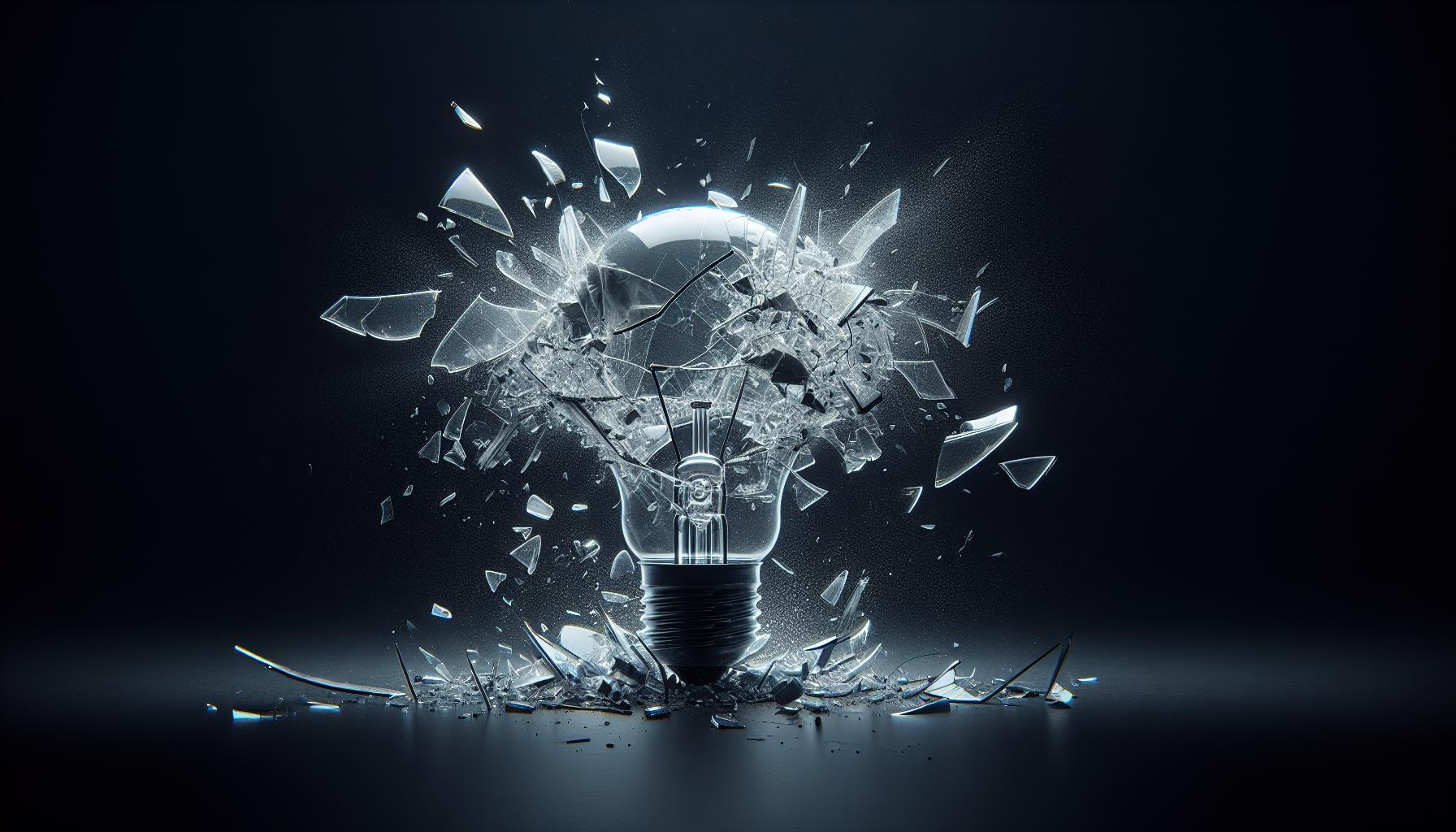
Power surges are like the silent assassins of the light bulb world. You’ve got your setup perfectly dialed in, and then boom—a surge sends a high voltage spike through your bulb, causing it to die prematurely or, worse, explode. Surges can happen for many reasons, from lightning strikes to high-powered devices kicking in elsewhere in your home.
Voltage fluctuations that occur during a power surge can seriously mess up the delicate filament inside incandescent bulbs. Consider that filament like a tightrope walker; the moment the balance is off, it’s a tumble into the abyss. Now, with LED bulbs, although sturdier against surges, they’ve got their own kryptonite. Their electronic circuits can meet their match with a good jolt from a surge, sending them to an early grave.
Here’s a quick breakdown:
| Cause of Surge | Consequence for Incandescent Bulbs | Consequence for LED Bulbs |
|---|---|---|
| Lightning Strikes | Filament snap | Circuit damage |
| High-powered Appliances | Filament overheat and break | Electron flow interruption |
| Faulty Electrical Wiring | Chronic stress on filament | Voltage instability |
To combat this, you’ll want to safeguard your electrical system. Surge protectors can be your lighting’s knight in shining armor. Look for ones that can handle your home’s energy demands. If you’re into DIY, it might be time to upgrade your circuit breaker or invest in whole-house surge protection.
Faulty wiring is another culprit. It’s like setting a trap for your bulbs without even realizing it. Old or damaged wires can have inconsistent current flow, which is no playground for a bulb. Inspect your wiring regularly, or get a professional to give it a once-over, especially if you’re living in an older home.
Remember, a stable electrical supply is key to keeping your bulbs alive and kicking, but also to prevent those startling explosions that can make your heart skip a beat. Just like you’d look after your heart, look after your wiring and protect against those surges.
Defective Bulbs and Poor Quality
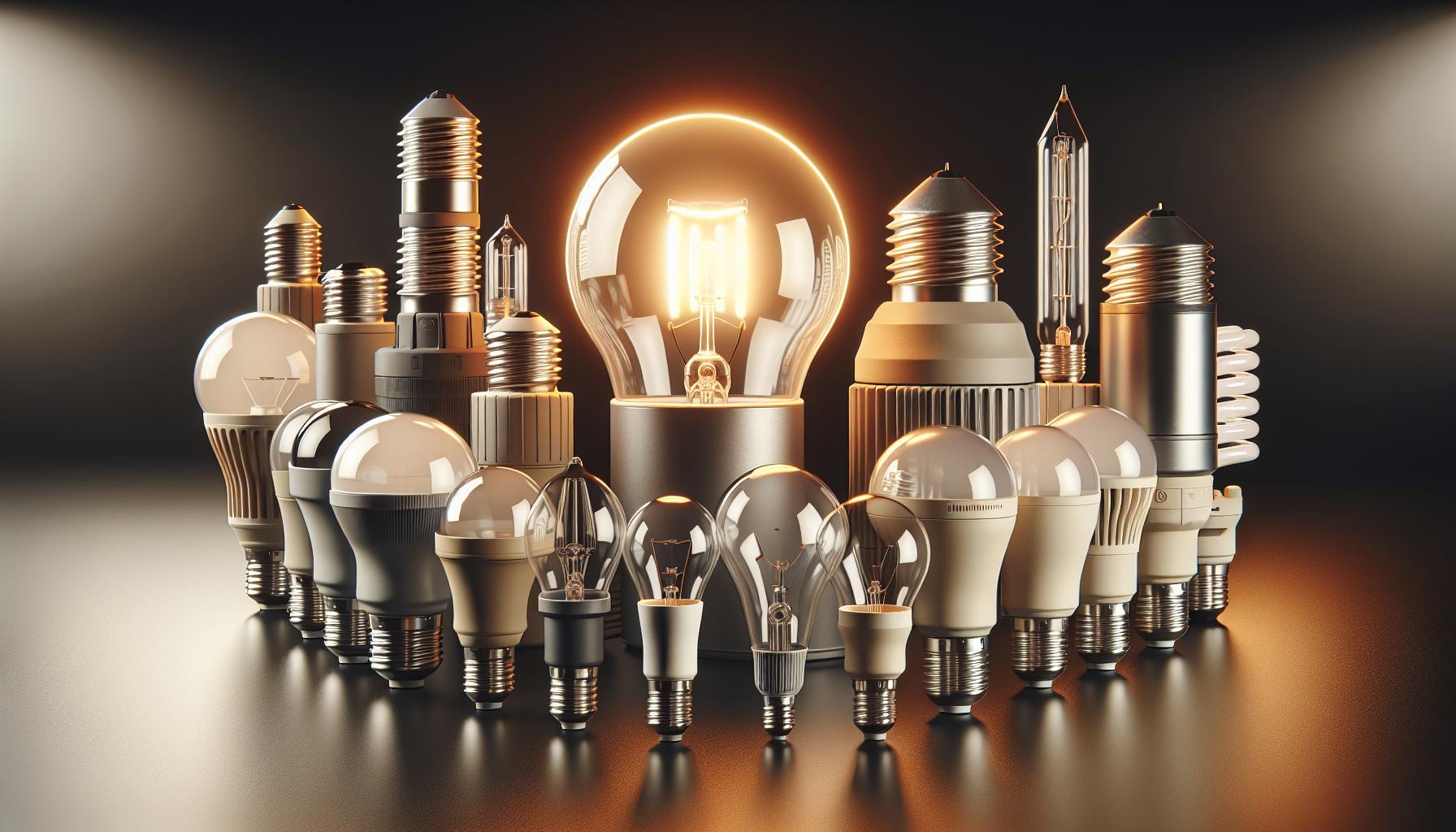
As someone who’s passionate about all things lighting, you know the anticipation of installing a fresh bulb and the dismay when it goes out with a bang. Often, these premature exits are due to defective bulbs or subpar manufacturing. When you’re shopping for bulbs, it’s tempting to go for the bargain bin to save a few bucks. But this is one area where skimping can lead to shocking results—quite literally.
Here’s the thing: low-quality bulbs often cut corners on materials and manufacturing processes. In these bulbs, you might find thin glass that’s more prone to stress and subsequent breaking. Faulty filaments or inadequate quality control can introduce weaknesses that make the bulb more likely to fail under normal conditions. Sometimes, the gas mix inside these cheap bulbs isn’t up to par, which can adversely affect both longevity and, yes, even the risk of explosion.
In the case of LED bulbs, you’ve got to keep an eye out for substandard LED drivers and heat sinks. These components are crucial for managing the heat produced by LEDs. A poorly designed heat sink can’t dissipate heat effectively, leading to overheating and failure. Likewise, cheap LED drivers may be more prone to malfunctions, which can lead to overvoltage incidents within the bulbs themselves.
To safeguard your home and get the most out of your lighting investment, always opt for bulbs from reputable brands. They may cost a bit more upfront, but they often come with warranties and a promise of quality that’s worth the extra pennies. Plus, a reliable brand is more likely to rigorously test their bulbs, so you’re not left in the dark—or cleaning up shards of glass.
And let’s not forget smart shopping:
- Check reviews and ratings for insight on reliability
- Buy from established retailers or direct from manufacturers
- Look for certifications or testing marks that indicate quality control
Your home is your castle, and every good castle needs a well-lit environment that’s both safe and welcoming. Don’t let the pursuit of savings turn your bright abode into a shadowy retreat. By investing a little more in high-caliber bulbs, you ensure a more consistent, safer glow that keeps shining, project after project.
Precautions to Prevent Light Bulb Explosions
Protecting your home from the unwelcome surprise of a light bulb explosion isn’t just smart—it’s essential for maintaining a safe and cozy atmosphere where you can dive into your DIY projects with peace of mind. Whether you’re crafting a homemade lamp or setting the mood in your living room, safety is paramount. Here’s how you can keep those lights burning bright without any unexpected pop.
Firstly, always check the wattage requirements on your lighting fixtures. Putting a bulb that exceeds the recommended wattage into a lamp is like inviting a bull into a china shop—something’s bound to break. Every fixture has its limits, and keeping within them not only prevents overheating but also extends the life of your bulbs.
Next, consider the environment where your light bulbs will spend their days (and nights). High humidity areas can be particularly harsh on your bulbs, so for places like bathrooms or kitchens, opt for bulbs designed to withstand the steam and splashes. There’s nothing more frustrating than having to rummage for a replacement bulb when you’d rather be focusing on your latest home improvement masterpiece.
Installing your bulbs properly is just as important as choosing the right type. Make sure the bulb is screwed in securely, but don’t wage war with it. Over-tightening can cause the base to crack, increasing the risk of an electrical short and potentially leading to a shatter later down the line.
Remember to keep your light fixtures clean and dust-free. Not only does this simple act make your space brighter and more inviting, but it also prevents dust from accumulating on the bulb’s surface, which can lead to excessive heat buildup.
For those of you who adore the latest gadgets and smart home features, investing in high-quality surge protectors is a no-brainer. Power surges can be devastating to all electrical appliances, and light bulbs are no exception. A robust surge protector can save your bulbs from an untimely demise during the next thunderstorm.
By following these precautions, you’ll not only extend the lifespan of your light bulbs but also maintain a safer, brighter home where you can focus on creating, enhancing, and enjoying each of your DIY endeavors. Keep these tips in mind next time you’re up on the ladder, swapping out an old friend for a new beam of light.
Conclusion
You’ve got the power to keep your home bright and safe. Remember to match the wattage, choose the right bulbs for damp spaces, and install them just right—not too tight! A clean fixture is a happy one, and a quality surge protector is your bulb’s best friend. Stick with these tips, and you’ll not only sidestep the startling pop of a bulb bursting but also enjoy their glow for much longer. Stay illuminated, stay safe!
Frequently Asked Questions
What can cause a light bulb to explode?
Light bulbs can explode due to a variety of reasons including power surges, faulty wiring, improper wattage, high humidity, and poor bulb quality or installation.
How can I prevent light bulb explosions?
To prevent light bulb explosions, ensure you’re using the correct wattage, choose bulbs designed for specific environments (like high humidity areas), install bulbs securely without over-tightening, keep your fixtures clean, and use surge protectors.
Can the wrong wattage cause a light bulb to explode?
Yes, using a bulb with a wattage that exceeds the lighting fixture’s recommendation can cause excessive heat buildup and potentially lead to a light bulb explosion.
Are high-quality surge protectors necessary for preventing light bulb explosions?
While not necessary, high-quality surge protectors can help mitigate the risk of light bulb explosions caused by electrical surges, contributing to a safer home environment.
Does cleanliness affect light bulb longevity and safety?
Yes, keeping light fixtures clean and dust-free can prevent overheating and extend the lifespan of the bulbs, reducing the likelihood of explosions.




